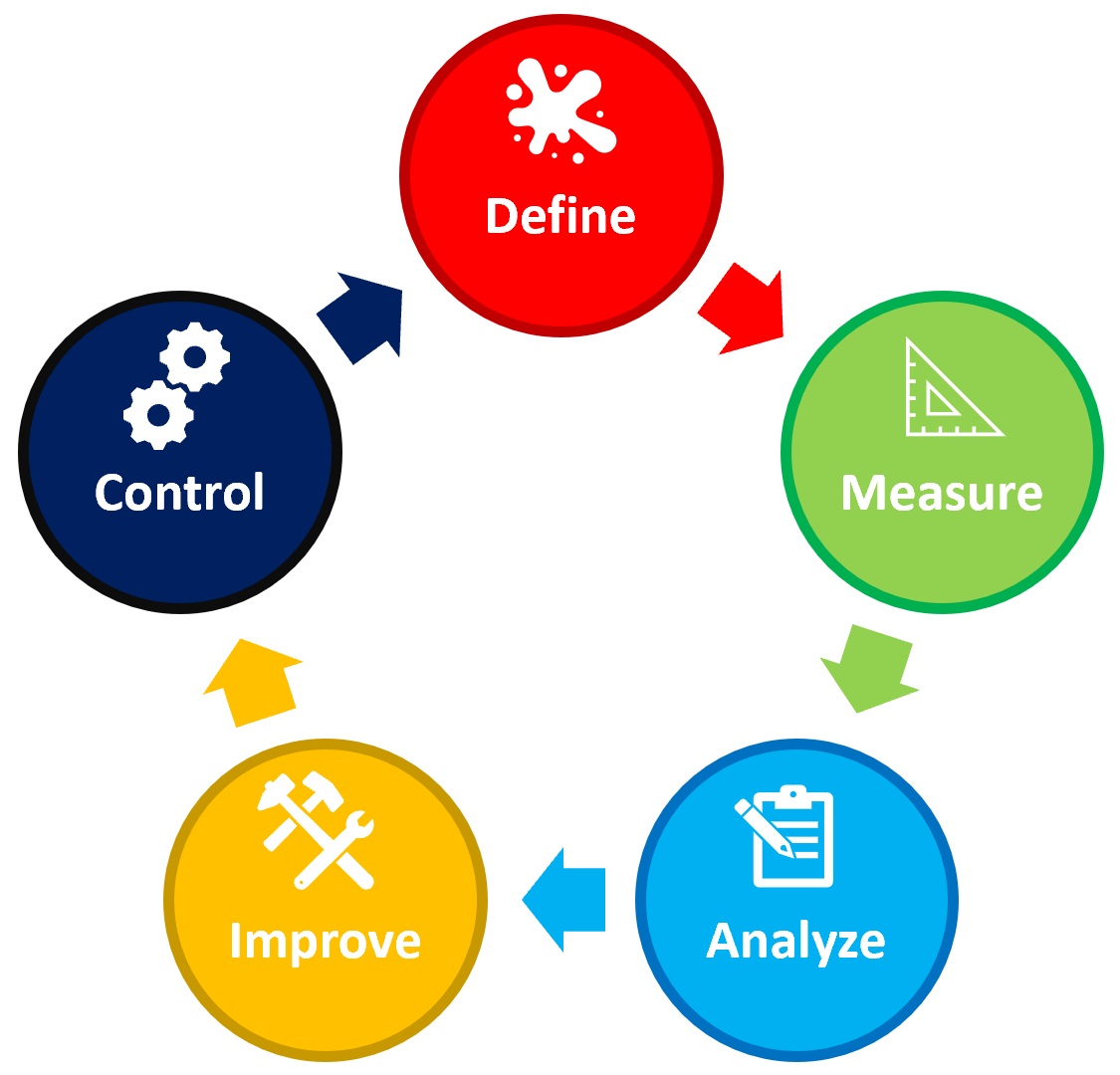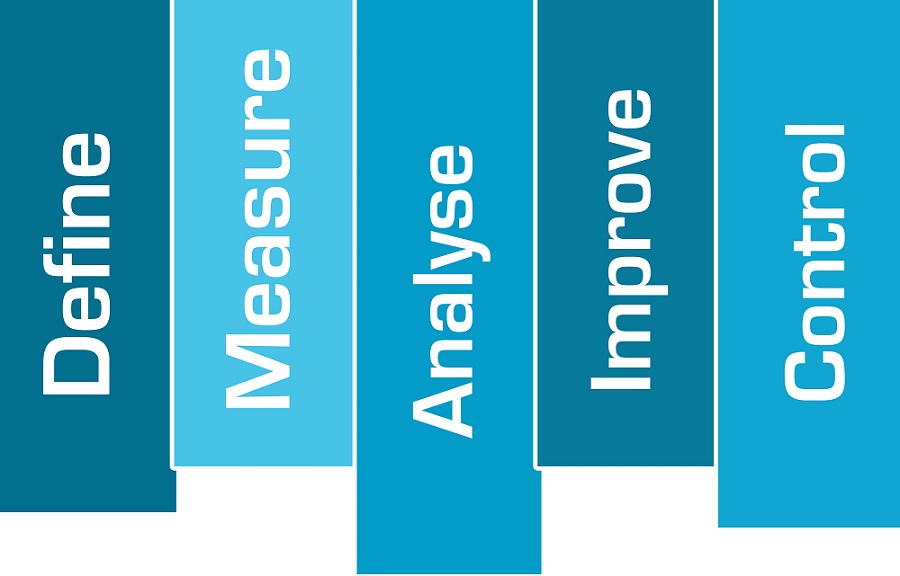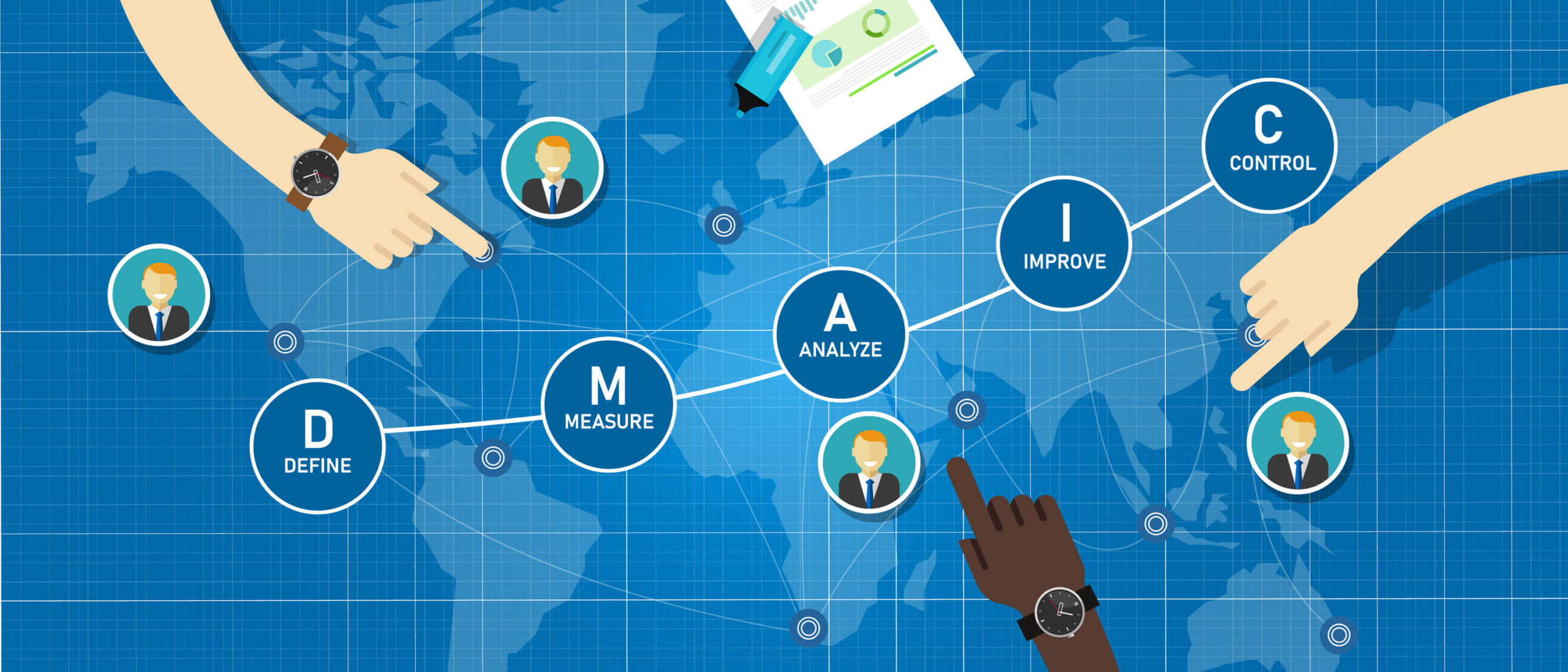Through our consulting and training at TSI, conversations surrounding continuous improvement often reveal one common topic: the simple, yet powerful tool DMAIC (pronounced de-MAY-ick). DMAIC is a key tool of the Six Sigma methodology which is a structured, customer-focused, data-driven, improvement technique used to analyze and improve processes. The DMAIC model can be implemented alone as a process improvement method or can be integrated with other process improvement initiatives. It is typically used to bring structure to the improvement process and serves as a tool to help explore possible solutions or opportunities, determine actionable steps, and implement actions in a structured manner.
That brings us to the question: What is DMAIC? The DMAIC process, also known as the DMAIC model, is an acronym representing Define, Measure, Analyze, Improve, and Control. DMAIC is often associated with LEAN and DMAIC Six Sigma improvement methodologies and affords a valuable option for any team or organization striving for improvement. Though we all strive for perfect processes, we also know the reality that a perfect process isn’t realistic. Therefore, embracing the notion of continuous improvement, we continually aim for the identification and implementation of best practices and work to move closer towards perfect solutions for inefficiencies and imperfect processes.

Learning and implementing new strategies can be challenging. When considering use of the DMAIC model, it is important to select a process improvement project that is appropriate for the method. A few things to consider are two P’s and two M’s of selecting a project.
- Problem: Be sure the project focuses on an actual problem that exists within a process. What is the actual problem? Why is it a problem?
- Potential for Improvement: Is there potential for improvement of the process? What is your hypothesis for areas of improvement that could result in improved efficiency, cost or time savings, etc.?
- Manageable: How complex is the problem? How manageable is this project?
- Measurable: How will we know we are improving the process? In what ways can we measure what we aim to achieve through the DMAIC process?
Once you have identified a satisfactory project, you are ready to begin! In order to help minimize the stress of grappling with new concepts, each phase of the DMAIC process is broken down in detail.
Define
The Define stage kicks off the identification of what problem you aim to solve. This takes time and careful, detailed planning and will provide structure and scaffolding around the entire improvement process. In this stage, create a clear statement that identifies the problem and sets boundaries around the scope of the intended improvement process. A project charter is often used to determine and document objectives for the project, define success, identify the anticipated impact of the project, and clarify roles and expectations. Regardless of the method selected for documenting actions taken during the DMAIC Define stage, it is important to document any and all details that will help manage the project throughout the next four stages of the DMAIC process. Important DMAIC Define steps include:
- Identify the problem, goal, and opportunity for improvement
- Define the scope of the project
- Identify involved and impacted stakeholders
- Estimate project impact for all stakeholders
- Shape the project team
- Identify and map-related processes
- Define requirements of involved parties
- Confirm all Define stage actions and plans through approval
Measure
The second stage of the DMAIC model is the data-driven measure stage wherein methods are determined to provide baseline measurements that are quantifiable and can be compared to post-improvement outcomes and results. In this stage, processes are documented and a baseline from which to improve is defined. In order to know where to go with improvement measures, it is imperative to understand how the process currently performs. Measurement provides a snapshot or progress during and at the conclusion of a project. The team must determine the appropriate measurement methods and frequency for data collection. Measurement is an essential part of the DMAIC process as it affords an indication of progress, need for modification or change of direction, and improvement. Measuring occurs throughout the entire process through to completion. DMAIC Measure steps include:
- Develop methods for measuring and collecting data to evidence progress and improvement
- Create a plan for data collection including frequency and person(s) responsible
- Determine baseline data (current state data)
- Analyze and monitor data

Analyze
The next DMAIC process stage is Analyze which determines the root cause of the problem. Understanding the true causes of or reasons behind the problem enables later discovery of solutions that actually target and resolve the identified problem. Many processes have multiple problems. Focusing on the causes as opposed to the outcomes or symptoms of the problem helps to ensure that actual causes become the focus for improvement, keeping the process itself in the center of the DMAIC process. Without proper analysis, focus can be distracted to solutions that don’t actually confront or solve the actual problem leading to unintended waste of time and resources and can even lead to other problems. DMAIC Analyze steps include:
- Write a problem statement
- Conduct a root cause analysis
- Analyze the process detail
- Measure and document the data
- Identify the root cause(s)
- Verify the problem’s causes
- Begin to plan actions for improvement
Improve
The DMAIC process Improve stage illuminates the steps to be implemented to resolve the problem. The plans and measures identified earlier in the DMAIC model are now implemented. Improving processes isn’t a straightforward, linear process, rather it involves action, evaluation and measurement of action, and modification of action to ensure improvement. This stage should be supported by data and any associated risks should be identified, documented, and mitigated throughout the improvement actions. It is essential to track improvement activities throughout the project to ensure efficiency, thoroughness, and transparency. DMAIC Improve steps include:
- Develop ideas for solutions
- Define potential and anticipated benefits
- Construct revised processes and plans
- Design and implement a solution and plan for implementation
- Measure implemented improvement actions
- Communicate plans and progress to all stakeholders
- Document plans, progress, and outcomes
Control
The final stage in the DMAIC model is Control. The Control stage determines how to sustain the improvement and make sure improvements don’t diminish over time. How can gains be maintained and transitioned to best practices and part of the improved process? Through the Control stage, monitoring and response plans are developed to track improvements, respond when there is lacking performance, and ensure project goals are achieved. DMAIC Control steps include:
- Verify and document improvements
- Document the improved process
- Verify achievement of project goals
- Celebrate and share the successful achievement of the project
- Continuously improve and use lessons learned in the DMAIC process

Conclusion
In summary, the DMAIC process is a structured, data-driven approach to improvement. It requires discipline and attention to detail, but when implemented correctly, can yield powerful change and improvements in a sustainable manner. In what ways do you foresee using the DMAIC model in your work? What processes could benefit from applying the DMAIC process to spearhead improvement for your department or team? Transforming Solutions welcomes your ideas and invites you to be a DMAIC thought partner!
